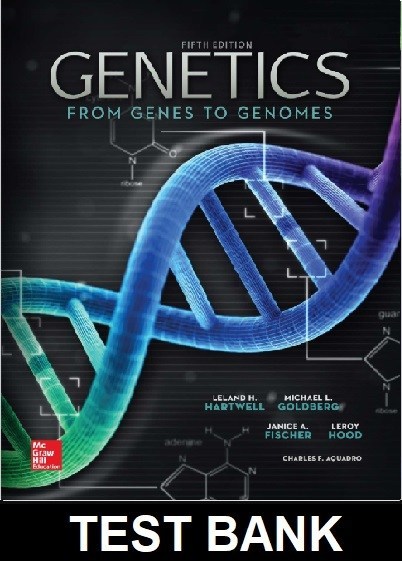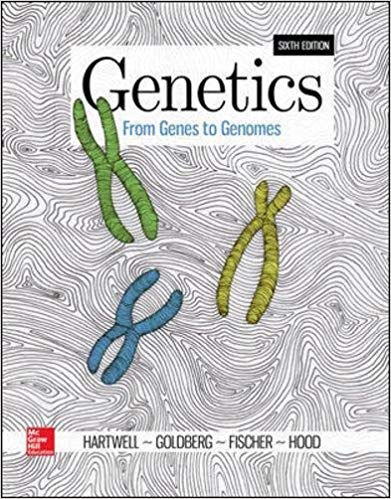Test Bank For Genetics From Genes to Genomes 5th Edition By Hartwell
Chapter 02
Mendel’s Principles of Heredity
Multiple Choice Questions
- What was the importance of Mendel performing reciprocal crosses?
- To be able to breed plants all year round
- To obtain enough plants to perform the experiments that Mendel wanted, which would not have been sufficient without performing reciprocal crosses
- To disprove a hypothesis at the time the experiments were performed that stated the ovum carried all the information for progeny
- To demonstrate that the inheritance of a trait was not dependent on which parent carried the trait
Bloom’s: 2. Understand
Learning Objective: 02.01.03 Explain the importance of Mendel’s inclusion of reciprocal crosses within his controlled breeding program of pea plants.
Section: 2.01
Topic: Background – The Historical Puzzle of Inheritance
- What is the difference between cross and self fertilization?
A.In cross-fertilization the gametes from one plant are used to fertilize the gametes of another plant
B. In cross-fertilization the gametes from one plant are used to fertilize the gametes from the same plant
C. In self-fertilization the gametes from one plant are used to fertilize the gametes from another plant
D. In cross-fertilization insects are used to pollinate the plants while in self-fertilization the investigator pollinates the plants
Bloom’s: 2. Understand
Learning Objective: 02.01.02 Describe how Mendel cross-fertilized and self-fertilized pea plants.
Section: 2.01
Topic: Background – The Historical Puzzle of Inheritance
- What is the outcome of breeding two plants each pure bred and each having an antagonistic trait?
A.Only one of the traits will be seen in the progeny
B. Both traits will be seen in the progeny
C. Both traits will be seen in the progeny in a 3:1 ratio
D. Only one trait will be seen and it will be the trait of the female
Bloom’s: 2. Understand
Learning Objective: 02.01.04 Predict the type of progeny produced by Mendel’s crosses between pure-breeding plants with discrete, antagonistic traits, such as purple versus white flowers.
Section: 2.01
Topic: Background – The Historical Puzzle of Inheritance
- According to Mendel’s Law of Independent Assortment
A.Genes of different chromosomes randomly assort into different gametes
B. Alleles for one gene randomly assort into different gametes
C. Dominant alleles for one gene must assort into the same gamete as the dominant alleles for another gene
D. Dominant alleles for one gene must assort into the same gamete as the recessive alleles for another gene
Bloom’s: 2. Understand
Learning Objective: 02.02.03 Explain Mendel’s law of independent assortment and how the 9:3:3:1 phenotypic ratio in a dihybrid cross provides evidence for this law.
Section: 2.02
Topic: Genetic Analysis According to Mendel




